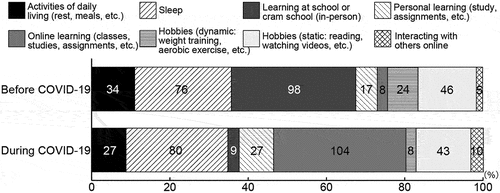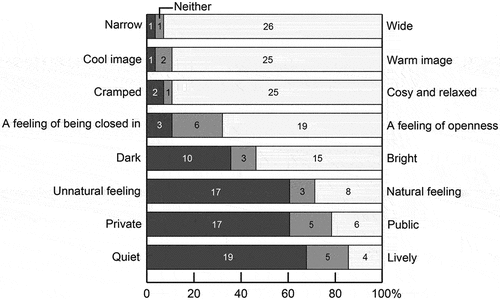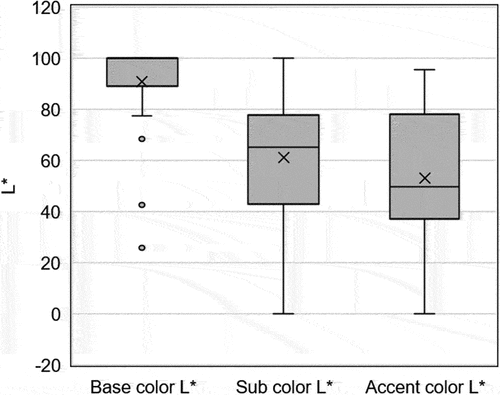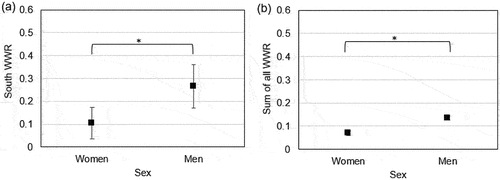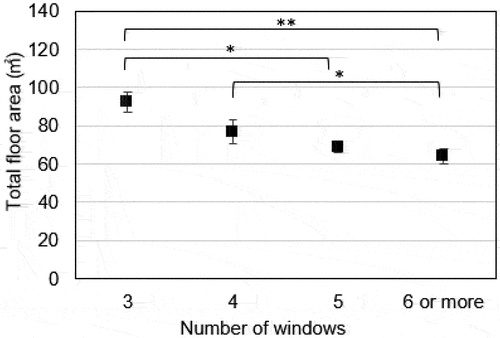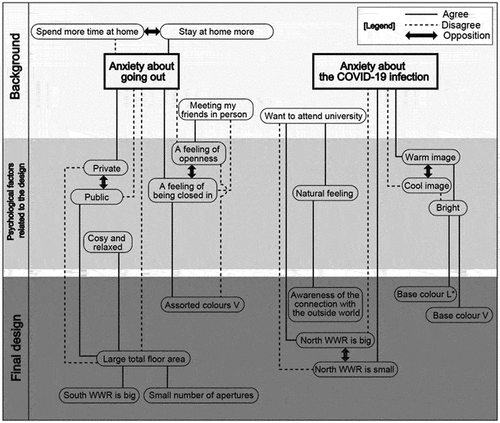Figures & data
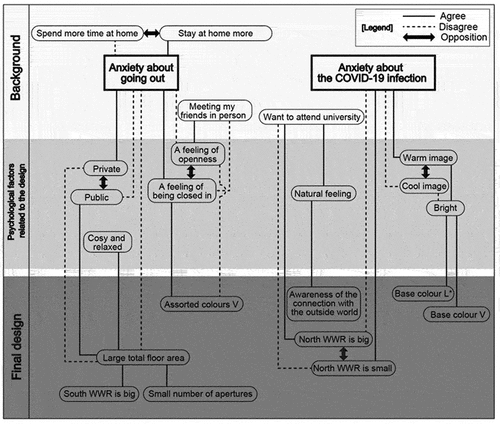
Table 1. Questionnaire items, contents, and options.
Table
Figure 1. Differences in stay-at-home-times before and during COVID-19, according to weekdays and weekends.
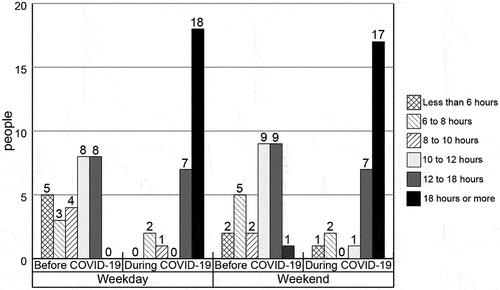
Figure 3. The proportion of participants feeling fearful of COVID-19 infection and anxiety about going out.

Table 2. Psychological evaluation according to the design image of housing space: correlations and descriptive statistics (r = Spearman’s rank correlation coefficient).
Figure 5. Relationship between “a feeling of openness–a feeling of being closed-in”/“private–public” and the design concept.
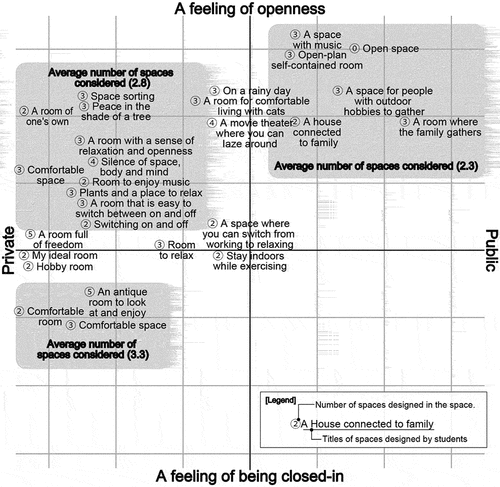
Table 3. ANOVA for the SD method by the items affected by the COVID-19 situation.
Table 4. ANOVA for the SD method by L*, V, and C.
Figure 8. Relationship between color temperatures and the psychological evaluation of the lighting used in the actual design; (a) dark–bright, (b) warm image–cool image.
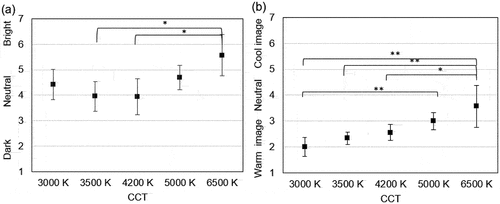
Figure 11. WWR for the number of windows; (a) South WWR, women, (b) South WWR, men, (c) sum of all the WWRs, women, (d) sum of all the WWRs, men.
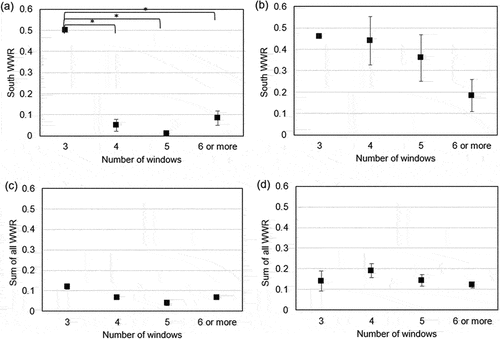
Table 5. ANOVA for the WWR and number of windows.

